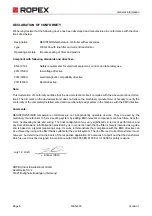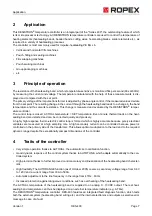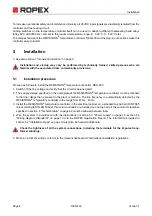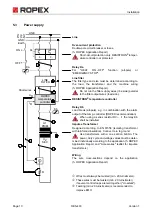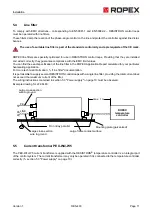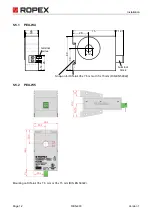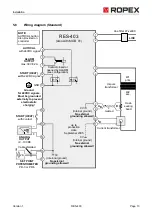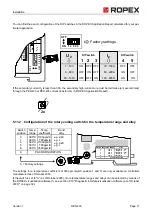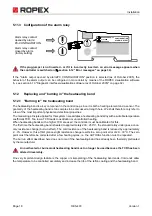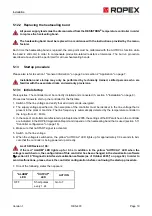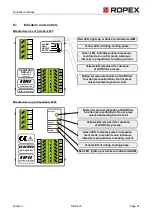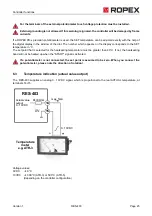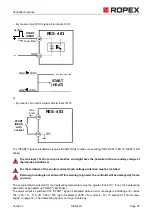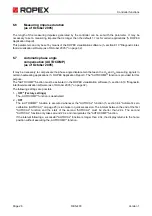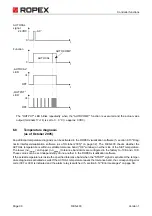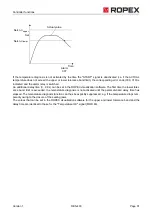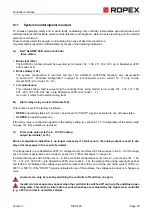
Controller functions
Page 20
RES-403
Version 1
Activate the AUTOCAL function while the heatsealing band is still cold (either with the manual button on the
controller or by applying an external signal to terminals 8+13). The yellow "AUTOCAL" LED lights up the dura-
tion of the calibration process (approx. 10…15s). A voltage of app. 0VDC appears at the same time at the
actual value output (terminals 14+15). If an ATR-x is connected, it indicates 0…3°C.
When the zero point has been calibrated, the "AUTOCAL" LED goes out and a voltage of 0.66VDC (300°C
range) or 0.4VDC (500°C range) appears at the actual value output instead. If an ATR-x is connected, it must
be set to "Z".
If the zero point has not been calibrated successfully, the red "ALARM" LED blinks slowly (1Hz). In this case
the controller configuration is incorrect (
section 5.11 "Controller configuration" on page 16 and ROPEX
Application Report). Repeat the calibration after the controller has been configured correctly.
8. When the zero point has been calibrated successfully, set a defined temperature on the set point potentiometer
and activate the "START" signal (HEAT). The "HEAT" LED then lights up. The heating and control process can
be observed at the actual value output:
The controller is functioning correctly if the temperature (which corresponds to the signal change at the analog
output) has a harmonious motion, in other words it must not jump abruptly, fluctuate or deviate temporarily in
the wrong direction. This kind of behavior would indicate that the U
R
measuring wires have been wired incor-
rectly.
If an error message is displayed, please proceed as described in section 6.12 "Error messages" on page 34.
9. Burn in the heatsealing band (
section 5.12 "Replacing and "burning in" the heatsealing band" on page 18)
and repeat the AUTOCAL function.
5.13.2 Restart after replacing the heatsealing band
To replace the heatsealing band, proceed as described in section 5.12 "Replacing and "burning in" the heatsealing
band" on page 18.
Always use a heatsealing band with the correct alloy, dimensions and copper-plating in order to
avoid malfunctions and overheating.
Continue with section 5.13.1 steps 4 to 9.
6
Controller functions
See also section 5.6 "Wiring diagram (Standard)" on page 13.
BLINKS fast
(4Hz)
OFF
Lit
Continuously
OFF
Fault diagnosis
(
sec. 6.12)
The controller is now
ready
"ALARM"
LED
"OUTPUT"
LED
ACTION
!

